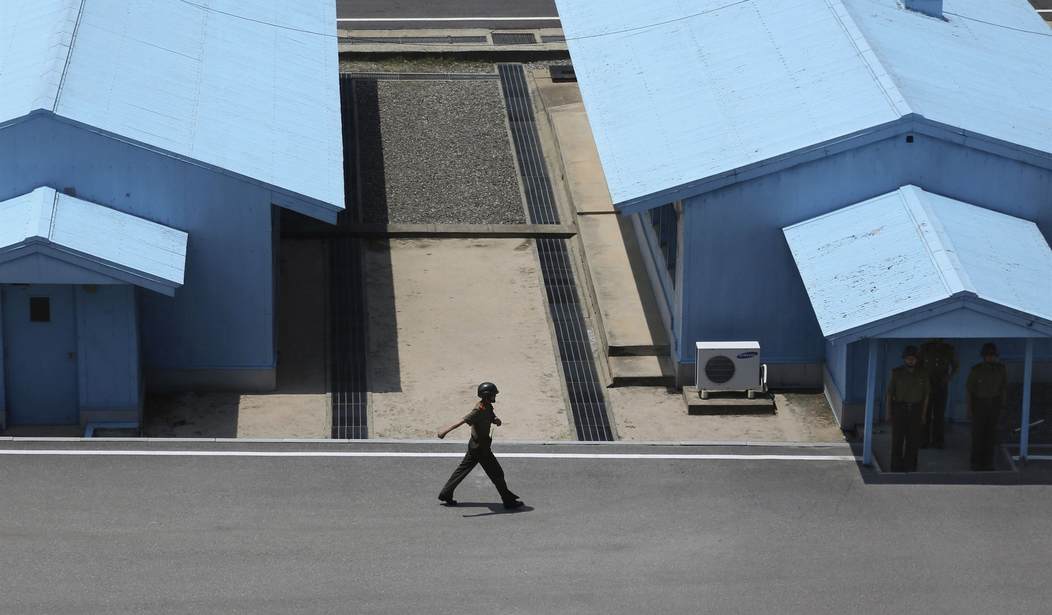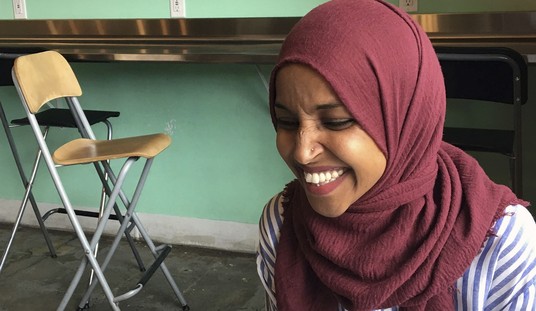South Korean President Yoon Suk-yeol dropped a bomb on Wednesday that didn’t get as much attention as it should have.
Referring to the uptick in North Korean nuclear tests and capabilities the president floated a trial balloon about the South building its own nuclear weapons to counter the growing threat from its neighbor to the north.
North Korean leader Kim Jong Un’s spree of weapons tests and growing nuclear threat have fueled a debate in South Korea over the deployment and development of nuclear weapons as a deterrent. Mr. Yoon has pushed for Washington to allow Seoul to be more involved in the management of nuclear weapons, including planning and joint exercises.
South Korea is protected under the U.S. nuclear umbrella, an agreement that says Washington will use its nuclear weapons to defend its ally. The U.S. withdrew its tactical nuclear weapons from South Korea in the early 1990s under a disarmament deal with the Soviet Union, and Washington has rejected calls to redeploy them.
Tensions on the peninsula are nowhere near as high as they have been in the past, but North Korean leader Kim Jong Un has relied heavily on his nuclear weapons development program and growing nuclear capabilities to prop up his regime.
Support for developing nuclear weapons in South Korea has risen at times of heightened tension with North Korea. A poll by the Chicago Council of Global Affairs showed support stood at about 55% in 2018, when leaders from the two countries engaged in a series of summits. With negotiations stalled and North Korea on a missile-testing spree, support had risen to 70% last year.
Mr. Yoon’s remarks are aimed at signaling to North Korea that South Korea is willing to consider extreme measures if Pyongyang continues to threaten Seoul with its weapons program, analysts said. But it is unlikely that Washington will seriously consider more nuclear weapons on the Korean Peninsula as an option, they said.
North Korea boasts the world’s 4th largest military and vast numbers of conventional weapons, but it is difficult to assess its actual military capabilities beyond its nuclear weapons. As the Ukraine war has shown, modern military power is less determined by the sheer weight of numbers and more by the quality of troops, tactics, and command, control, communications, and intelligence (C3-I).
North Korea’s conventional military can threaten the South and do incredible damage–again, look at Ukraine, where Russia’s poor performance has not inhibited its ability to impose significant costs on the country–but it likely could not win a war. Still, the death toll even without nuclear use would be astronomical, simply because of geography: Seoul is pretty much right on the border with the North and vulnerable to attack without a single North Korean soldier crossing the border.
According to the Rand Corporation, about 50% of South Korea’s population and economic activity is within range of the North’s long-range artillery. And that artillery has both conventional and chemical weapons capabilities. Obviously, Pyongyang is not similarly vulnerable, being far from the border.
The U.S. Department of Defense (DoD) estimates that the DPRK has over 14,000 artillery systems of all types, with approximately 70% of those systems forward deployed in over 4,000 underground bunkers, many within range of South Korea. DoD estimates that these pieces are capable of firing 500,000 shells per hour for several hours. Up to one-third of DPRK units may be capable of employing chemical weapons, draw- ing upon the estimated 2,500–5,000 tons of chemical agents the DPRK is believed to possess.
This force has already contributed to deterring preemptive strikes to halt the North Korean nuclear and intercontinental ballistic missile (ICBM) programs. The vulnerability of South Korean population centers to artillery increases the DPRK’s leverage and may increase the risks of provocation and conflict escalation.
A COSTLY DILEMMA
Rather than firing at maximum rate, the DPRK could choose to fire from a few to 10,000 shells per day on South Korean population centers. Such an attack would expose only a subset of the DPRK weapons for a short time to U.S.–ROK counterfire. By conserving its strength, the DPRK could continue these attacks for a protracted period of time—possibly for months—and preserve the threat of escalating to chemical and perhaps nuclear attack.
Effectively ending this barrage upon Seoul would require a coordinated counteroffensive by U.S. and ROK air and ground forces. Long-range air and ground fires would not be sufficient to neutralize this threat.
Theoretically, South Korea is under the American Nuclear Umbrella, yet despite assurances from the United States, the South Koreans are unsurprisingly skeptical that the US would follow through on its commitment to defend the South to that extent. The US did station tactical nukes in the South during the Cold War but removed them after the collapse of the Soviet Union. At the time, the North had no nuclear capability and only acquired nuclear weapons this century.
The South has been trying to pressure the US to station nukes in the country once again, but we have unsurprisingly balked at the idea. While nukes are likely available in the region should they be required (God forbid), the South would like them on site as a stronger deterrent to the North.
It appeared that progress was being made on ending the Korean War, which technically has yet to end, but those hopes have faded with the replacement of Trump by Biden. North Korea, which had ceased testing its ICBMs in 2017, resumed testing last year.
While conventional wisdom argues that nuclear proliferation is a clearly bad thing, it is arguable that the current situation is actually less stable than one where the North has nuclear weapons while the South does not. With such an imbalance of power–especially with North Korea being able to hold Seoul hostage with both nuclear and conventional weapons–an attack from the North is still a viable situation if the regime feels threatened by internal dissent.
The incentive to attack while the North’s regime is stable is actually pretty low. The North knows it cannot win a war with the South, only inflict damage. But in a situation where a North Korean leader feels threatened by internal dissent, the incentive to attack could skyrocket. A nuclear deterrent held by the South would be a powerful deterrent in such a situation.
Is South Korean President Yoon Suk-yeol likely to follow through on this suggestion? Not likely, at least not right now. But he benefits mightily from floating the idea. Average Koreans are supportive of the idea in principle, and by floating the possibility he pressures America to reiterate its commitment to the country.
That’s a win-win for him, with little downside. It’s not as if he is threatening to harm relations with the North since they couldn’t go much lower. He is annoying Americans, but our response will still benefit him by prompting us to reiterate our support, and in the case of an actual war the personal relations between the countries’ leaders are almost irrelevant. See Zelensky, who badgers us all the time and gets what he wants.
Personally, I wouldn’t be bothered at all by South Korea and even Japan acquiring nuclear weapons. I think that it would increase, rather than decrease stability in the region. Both are rational countries and allies, and their having nukes would complicate our adversaries’ lives and make them more cautious.
China would hate it, but that is a good thing. They are a rising power that wants to reconfigure the chessboard. We don’t want them to. Anything that checks their power is a good thing.







Join the conversation as a VIP Member